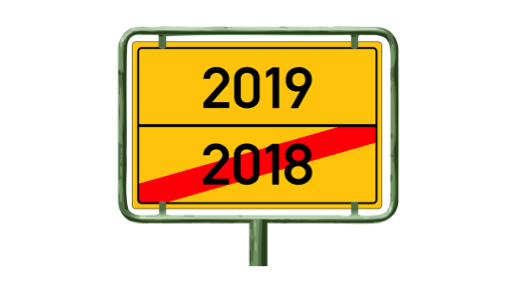
2018 highlights: A year full of data and new archives
We close a year full of new scientific data and improvements in our services.


We close a year full of new scientific data and improvements in our services.
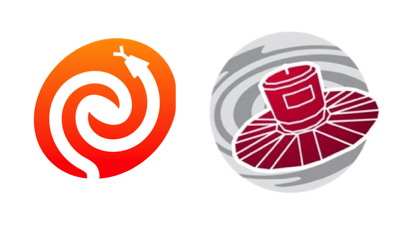
The module provides easy access to the Gaia Archive and a powerful analysis tool.

The Virtual Observatory protocol for distributed data storage enables data sharing within the scientific community.
Full story
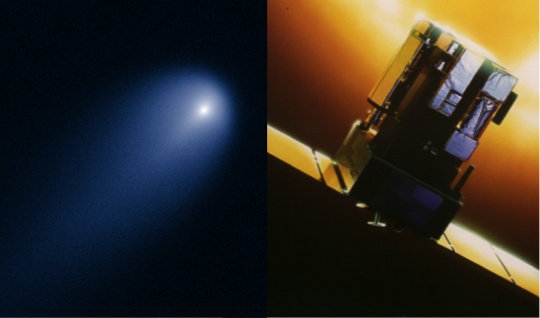
Monitoring of the comet’s perihelion passage marked a record of users of the SOHO Science Archive at ESAC.
Full story
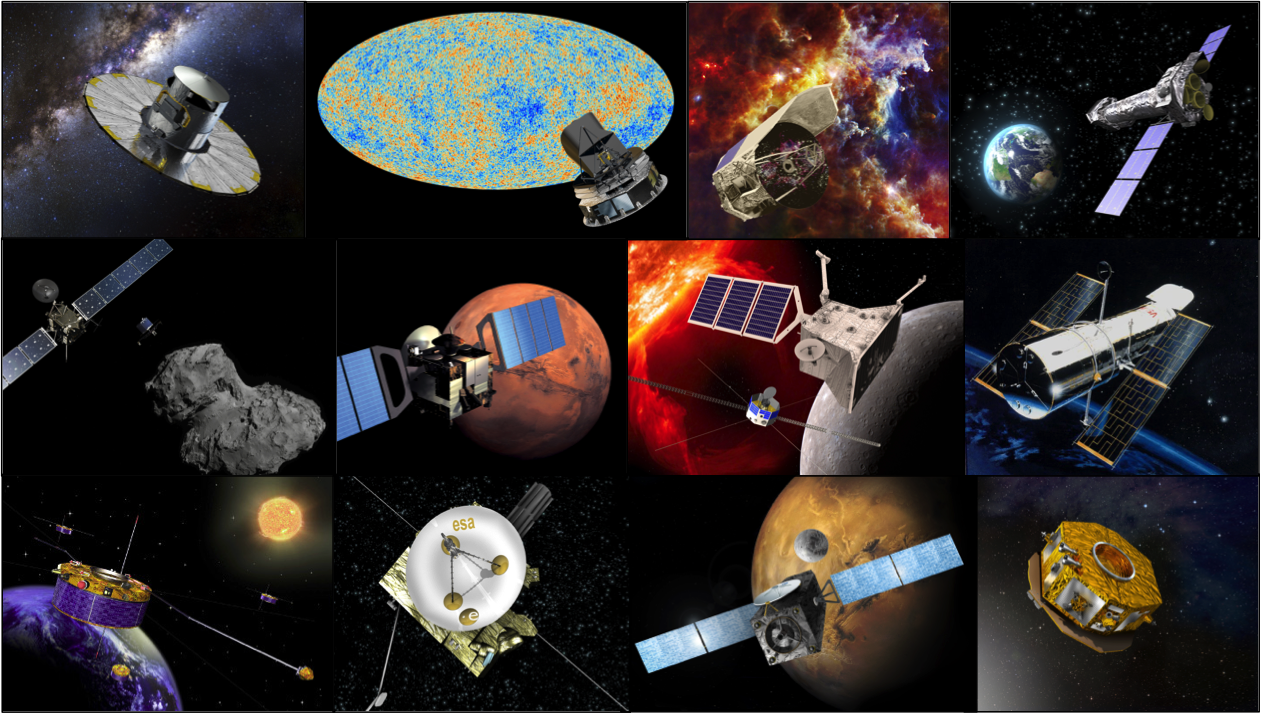
At the ESAC Science Data Centre, we close a year full of new scientific data and improvements in our services.
Surely, the most exciting event was the second Gaia data release (Gaia DR2) in April,
which was accompanied by a substantially improved version of the Gaia Archive, ready to affront the challenges of this and future releases.
This was a very important milestone at the ESDC due to the technical developments needed, and to the enormous number of users that were accessing the archive in just the first week, an absolute record for any ESA archive.
Other important releases in the astronomical domain include: the Planck final data release (DR3) in July,
also accompanied with an improved Planck Legacy Archive (PLA);
the release of the legacy version of the Herschel Science Archive (HSA), incorporating a Catalogue Query tool and a publication tool;
the release of version 10.0 of the XMM-Newton Science Archive (XSA) with integration of JS9 for a more efficient interactive analysis of data;
and the release of ESASky 3.0 with improved functionalities, new look-and-feel, and a novel switch between two modes depending on the user profile.
Last but not least, the Lisa Pathfinder mission will move into legacy phase by the end of the year, when the final version of the LPF archive will be released.
We will tell you more about this milestone in our next Newsletter.
In the Planetary Science domain, we recently celebrated the successful launch of BepiColombo,
which marked the official start of the BepiColombo Operational Archive (BOA) hosting the operational data from the mission.
The Planetary Science Archive (PSA) released in June version 5.5, featuring the long-time awaited integrated image browser;
this makes it easier to query for products with associated images.
The archive data holdings have also been increased, with regular deliveries of data from the Mars Express and Rosetta instrument teams, as well as the first public datasets from the ExoMars mission.
In particular, the Rosetta instrument teams are working hard to close out the delivery of products and especially derived products before the end of the mission post-operation phase.
In Heliophysics, the most important highlights were the releases of the Ulysses Final Archive (UFA) in March, which provides easy access to the unique data from this mission,
and of the Cluster Science Archive (CSA) web interface in August, which superseded the veteran Java application.
The ESDC also hosted the first International Heliophysics Data Environment Meeting, whose most important outcome was the creation of the International Heliophysics Data Environment Alliance (IHDEA).
Images: ESA
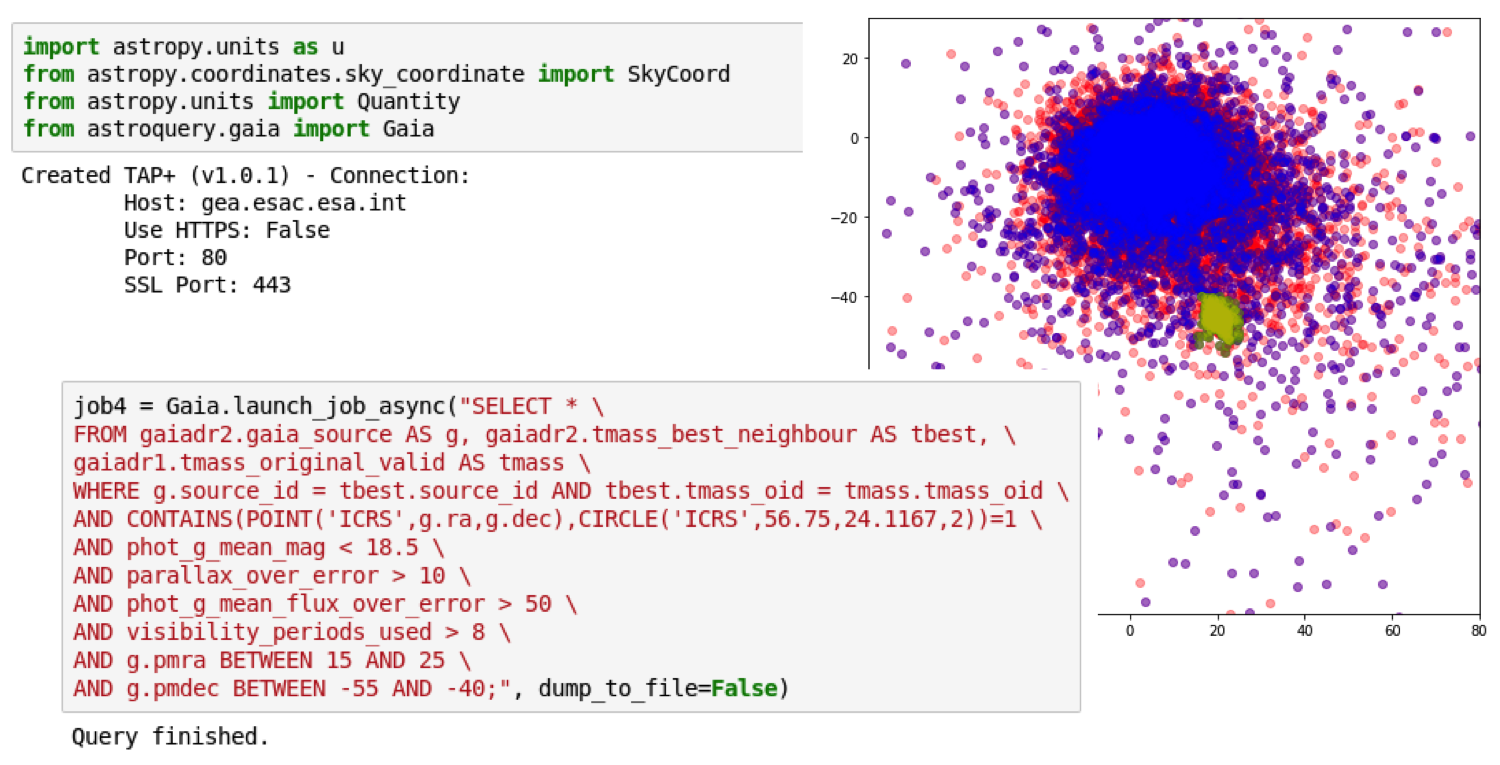
The Astroquery.Gaia python module not only provides easy access to the Gaia Archive, but it is also a powerful analysis tool:
Python scripts can be prepared to retrieve Gaia data and combine them with data from other archives, allowing users to create complex queries to mine the vast amount of data offered by the mission.
The module is distributed as part of Astroquery, a set of useful tools for querying on-line astronomical archives and databases.
This is an affiliated package of Astropy, a project that provides a set of common software for Astronomy;
it is usually distributed as part of the popular Anaconda data science platform, which includes interpreters for Python and R, Integrated Development Environments, Jupyter notebooks, Jupyter hubs, and other data analysis tools.
The Astroquery.Gaia python module has been a big success among the scientific community, with more that 1.5 million queries only in the last month.
Currently 85% of the ADQL queries to the Gaia Archive are performed in this way.
Image: ESA/ESDC
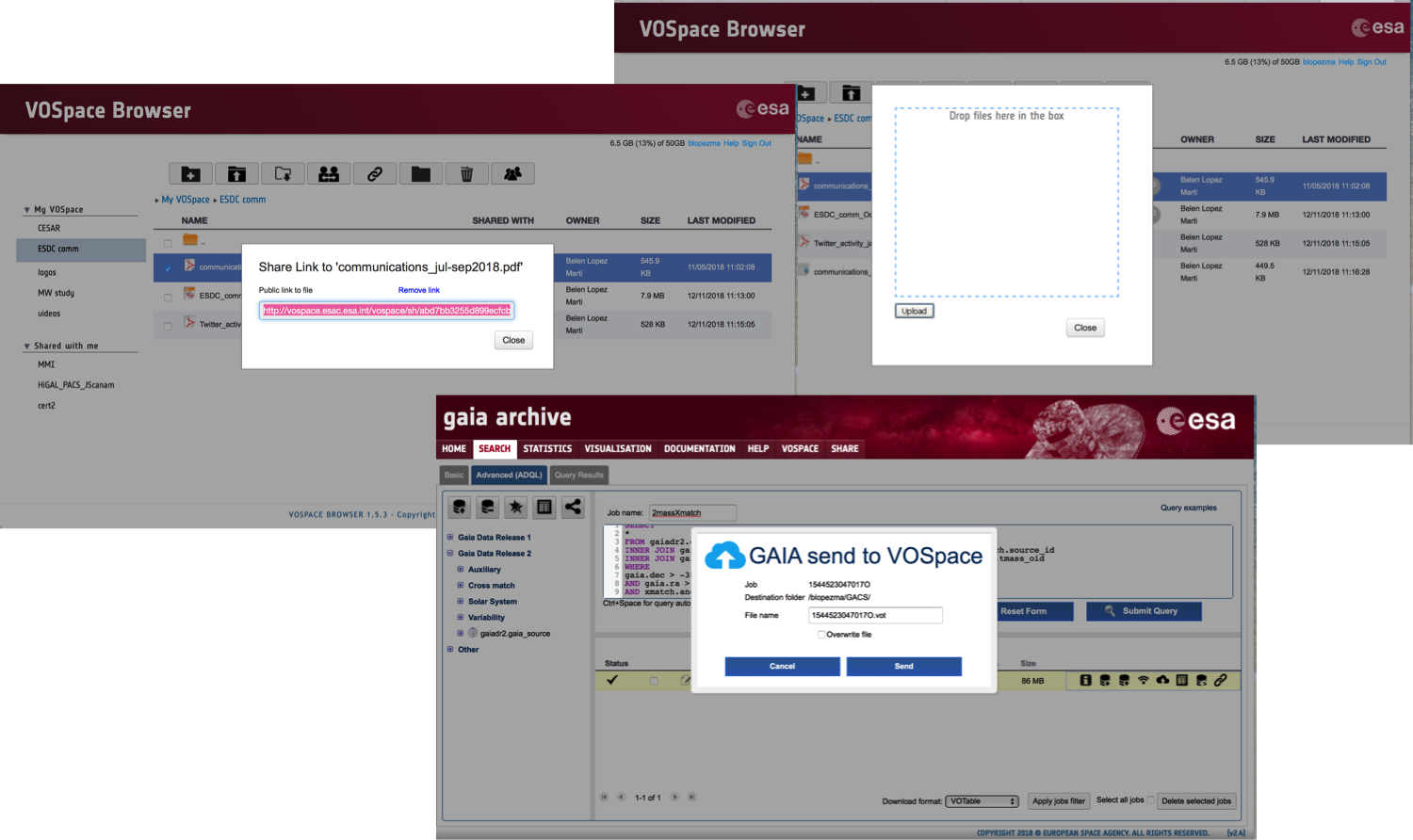
Sharing scientific results with collaborators is an important point of scientific research.
VOSpace is the Virtual Observatory protocol for distributed data storage that enables data sharing within the scientific community.
Having an ESA LDAP account is the only requirement to access VOSpace and start sharing content.
Users can make use of their own VOSpace account to store and share scientific results with other colleagues even if they are outside ESA through public or restricted access links for a given group of users.
The Gaia Archive is an example of built-in collaboration, where users can send query results to their own VOSpace accounts and therefore allow other collaborators to access the data for further analysis and research.
This feature is only available for logged users as it requires access to storage resources provided by ESDC.
Image: ESA/ESDC
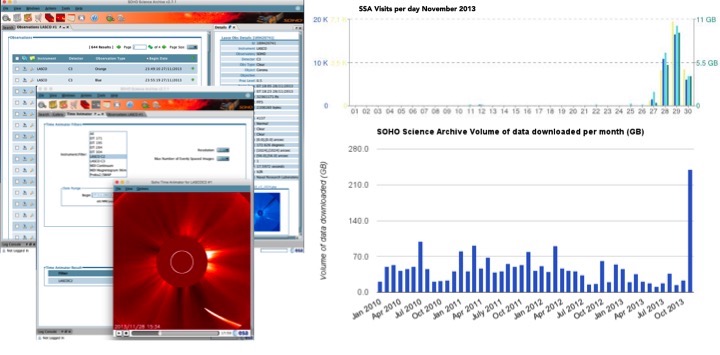
Last November marked 5 years since the perihelion passage of comet ISON (formally named C/2012 S1).
The object, discovered in September 2012, raised the interest of scientists due to its hyperbolic trajectory,
which indicated that it was coming from Oort’s cloud and that it would pass at barely 0.0124 au from the centre of the Sun.
ISON caught as well the attention of the general media
when it was suggested that it could become one of the brightest comets in the last half century after its perihelion passage on November 28, 2013.
A large monitoring campaign, involving at least a dozen spacecraft, was organised to study the comet.
ESA participated with several missions, including the joint NASA/ESA SOlar and Heliospheric Observatory (SOHO),
which in its 23 years of operation has become a powerful tool for the study of comets.
Owing to all the expectation created, the SOHO Science Archive (SSA) at ESAC registered at the time an unprecedented number of users:
Visits to the archive shot up from an average of about two hundred per month to more than 12,000 in the days of the perihelion passage (November 27 to 30). The command-line interface was accessed more than 30,000 times to retrieve postcards, and the Java client was launched more than 3,000 times.
About 230 GB of data were downloaded in November, compared to normal monthly averages of less than 70 GB.
The first SOHO observations of comet ISON were taken with the Solar Wind ANisotropies (SWAN) instrument, which measured water production rates from October 24 to November 24.
From November 27, the Large Angle and Spectrometric Coronagraph (LASCO) observed how the comet approached the Sun until it was no longer visible behind the coronagraph mask, as seen in the animation below.
However, instead of the announced brightness display after the flyby, the comet briefly brightened and dimmed again, quickly fading below the naked-eye limit by November 30;
this suggested that ISON had fully disintegrated.
As a matter of fact, detailed analyses of the measurements by LASCO and the SUMER instrument on SOHO suggest that the nucleus of comet ISON was destroyed prior to reaching perihelion.
The success of the ISON monitoring campaign shows that observational data related to exciting astronomical events are appealing to both scientists and the general public.
In addition to the access to the SoHO scientific images and their corresponding previews, the SSA offers their users the possibility to enjoy the animations in its Image Gallery (which include the passage of ISON and other comets),
and to create their own animations using the Time Animation functionality.
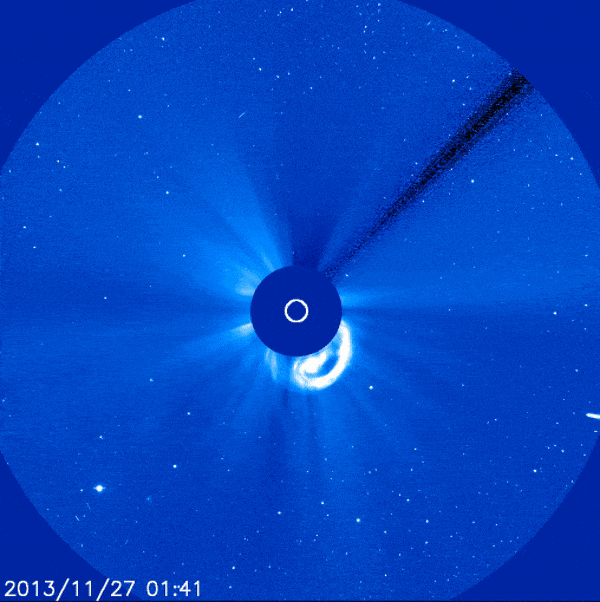 Images: NASA/ESA
Images: NASA/ESA